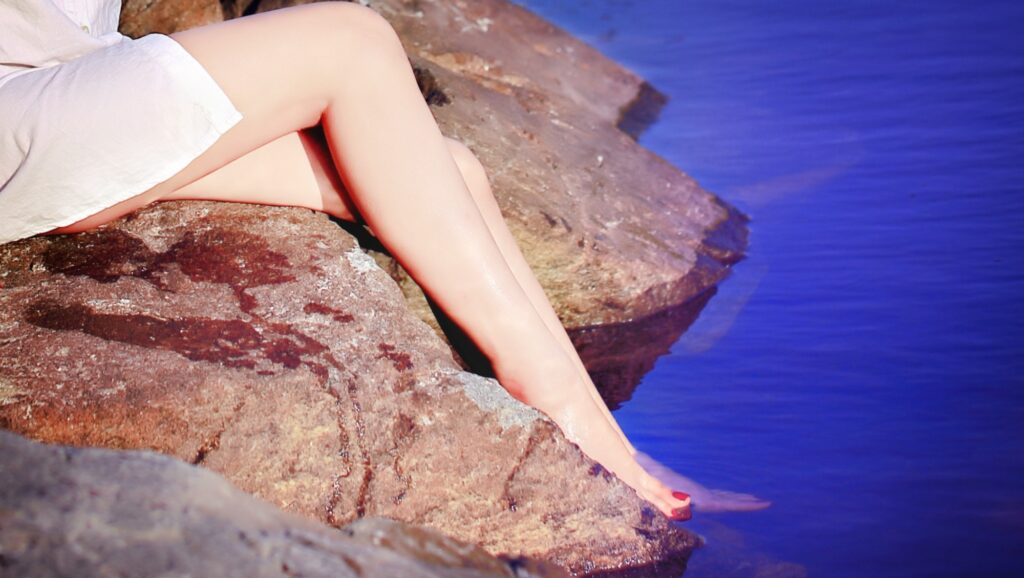Why Sugaring is Sweeter: Body Sugaring vs. Waxing

Do you like the idea of having smooth legs and a smooth bikini line, but find waxing to be painful?
Luckily, there’s an alternative available to waxing that more and more people are taking advantage of: sugaring.
What is sugaring? How does it compare to waxing?
Check out this guide to learn everything you need to know about waxing vs sugaring.
Sugaring vs Waxing
Sugaring is an all-natural alternative to waxing.
Traditional waxes are often made from synthetic materials that can be harmful to your skin. Body sugar, on the other hand, uses all-natural ingredients; water, sugar, and lemon juice. These ingredients are warmed to a certain temperature in order to create a goopy substance.
Just like waxing solutions, sugaring solutions are applied directly to the skin. However, waxes are usually removed using some type of adhesive strip. The sugar solution, on the other hand, adheres to the skin and is removed without a strip.
Instead, the technician uses a flick of the wrist to remove the sugar solution from your skin.
While body sugar is excellent at removing hair, it doesn’t hold onto your skin. This means your epidermis won’t come off when the sugar paste and hair do. But dead skin will come off.
Another major difference between sugaring and waxing is that body sugar is applied to the skin at body temperature. Wax, on the other hand, is applied to the skin at a high temperature. For this reason, your skin is more likely to experience stress and inflammation from waxing.
How Painful is Body Sugaring?
When deciding between sugaring and waxing, many peoples’ first question is, “Which is more painful, sugaring or waxing?”
While sugaring isn’t exactly pain-free, most find it to be a lot gentler than waxing. This is due in part to the fact that waxing pulls off the epidermis (the upper layer of skin), while sugaring does not, and due in part sugaring pulls the hairs on the direction of hair growth.
Also, if the wax is too hot, it can burn your skin, especially in sensitive areas. Because the body sugar is always applied at body temperature, you never have to worry about it burning your skin.
The body sugar is also more malleable than wax. This allows it to get all the way down to the root, which means it’s less likely to break off hairs at the surface.
Prepping for Your Appointment
So, how do you prep for a body sugaring appointment?
Here’s everything you need to do prior to your appointment:
- Avoid shaving or waxing for at least two weeks prior to your appointment, especially in large areas like the arms and legs
- For smaller areas, such as the bikini line, avoid hair removal 10 days prior to the appointment
- To remove dead skin cells and prepare the surface for sugaring, exfoliate every other day leading up to your appointment. But, avoid exfoliating 24 hours prior to your appointment
- Moisturize daily to keep your skin hydrated, but don’t apply moisturizer on the day of your appointment
- Come to your appointment with dry, clean skin
- Avoid taking a hot shower or working out immediately before your appointment, as this can make your skin sweaty, warm, and extra sensitive
The Sugaring Process
Now, let’s talk about what happens during the actual sugaring process.
When you get to your appointment, your technician will lead you to a private room. Depending on what area you’re having sugared, you may be required to remove certain articles of clothing.
After undressing, the technician will apply a powder to your skin, when necessary, to absorb the natural oils. This powder also works as a binding agent, as it helps separate the skin from the hair. The sugar solution is then laid onto your skin in the opposite direction of your hair. Going against the grain allows the sugar to better adhere to the hair.
After the sugar has attached to the hair, your technician will then pull it off using their hand. While some technicians use strips to remove the sugar, it’s not common.
And, that’s pretty much all there is to it! Immediately following the treatment, you’ll probably find that your skin feels smooth and soft. This is because the sugar solution acts as a natural exfoliant. This is another major difference between sugar and waxing, as waxing can be very drying.
Am I a Good Candidate for Sugaring?
Sugaring is for all skin types and skin tones. However, you should avoid sugaring if you’re currently taking or have taken in the last 12 months the prescribed oral acne medications.
These medications can cause severe drying and thinning of the skin, which means there’s a high risk of permanent skin damage if you sugar while on these medications.
If you wish to sugar, you’ll need to wait 12 months after discontinuing your medication.
Additionally, you should avoid sugaring if you’re using retinoid products. These products can make your skin more susceptible to irritation and tearing, so sugaring treated areas is not a good idea. We recommend discontinuing these products for one month before you try sugaring.
How Often Should I Sugar?
How often you should sugar depends on a number of factors. If you’re new to sugaring and other forms of hair removal, we recommend sugaring every 4 weeks or so.
If you continue to sugar on a regular basis, your hair follicles will get weaker over time. This means you can eventually switch to sugaring every 6 weeks or so.
Are You Ready to Try Sugaring?
Now that you’ve read this article, it’s time for you to decide if sugaring is right for you. You can always try it once and then go back to waxing if you find you don’t like it.
To schedule an appointment for sugaring, get in touch with us today.
© 2025 Vita Felice Medi Spa
All Rights Reserved.


